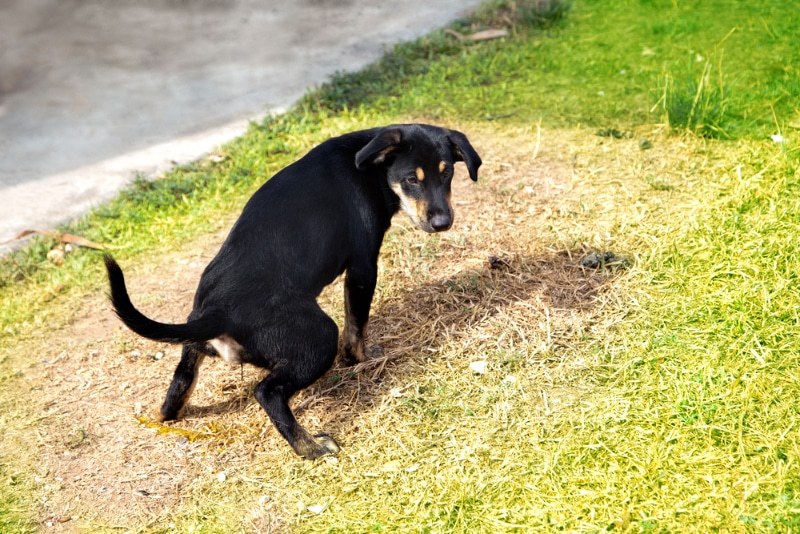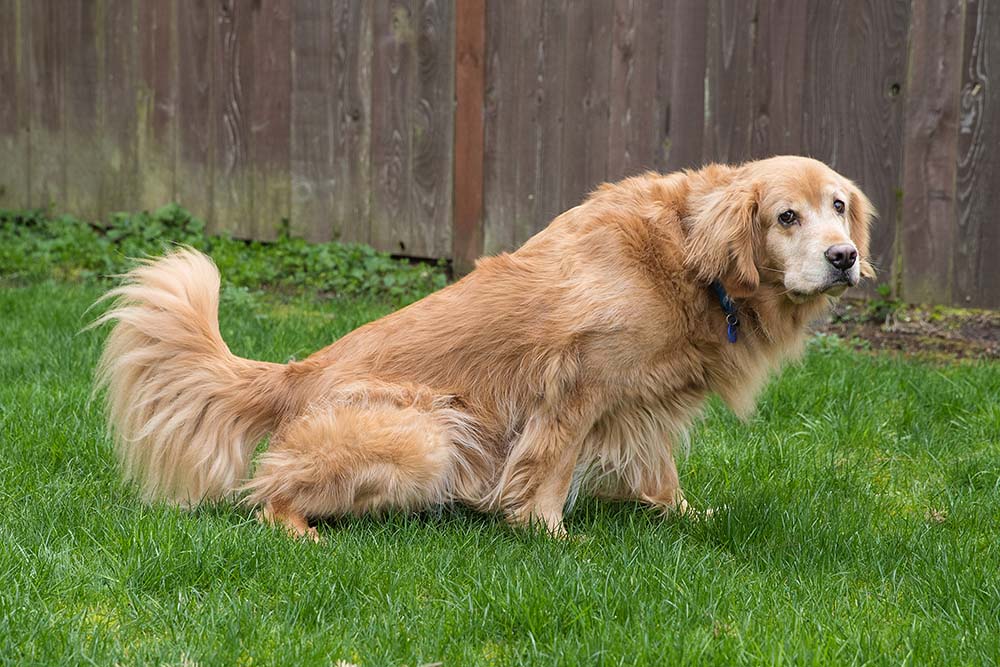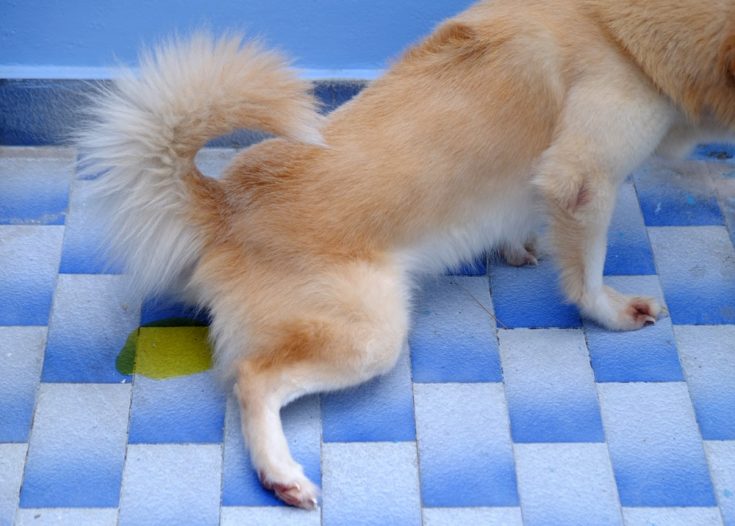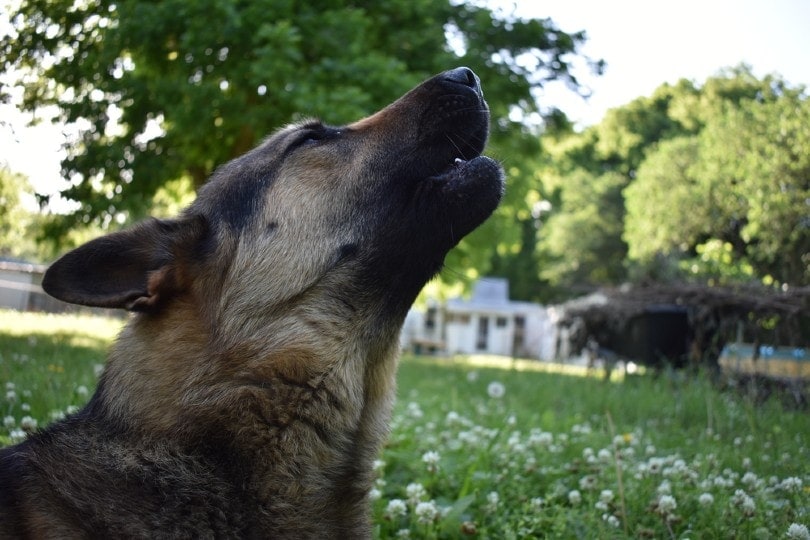Do Female Dogs Mark Territory? 5 Vet-Reviewed Reasons
By Brooke Bundy
Updated on

Click to Skip Ahead
Unneutered males are the most common culprits for “marking territory.” However, it’s actually quite common for dogs to “mark,” or pee in small, frequent spurts on walks, regardless of sex or reproductive status. Spayed and unspayed female dogs may scent mark, but sometimes for different reasons. While an unaltered female may mark during certain points in her heat cycle to encourage males to mate with her, a spayed female may still mark to claim territory. Here are the reasons female dogs mark territory, as well as other reasons a dog may pee more frequently or inappropriately, and when the behavior might be a concern to pet parents.
The 5 Reasons Why Female Dogs Mark Territory
1. Communicating With Other Dogs
If your neighborhood is home to a large canine population, your dog might feel the need to communicate that every patch of grass belongs to her. While marking can be a territorial behavior, it can also be a friendly form of communication between neighboring pets. Dog urine contains a lot of information about the animal, and dogs learn a lot about each other through smelling pheromones especially in the urine.

2. Telling Other Animals to Keep Away
A female dog may also mark territory if another dog, cat, or animal comes into your yard and leaves their scent behind. Your female dog will smell the scent of the other animal, and then leave behind a scent of her own to let the other animal know that this is her yard. It is usually meant as a warning to the other animal to stay away, even if it may or may not actually keep other animals out of the yard.
3. Attracting Mates
If your female dog isn’t spayed, she may be marking to draw mates when she is in heat. Dogs have pheromones in their urine that attract other dogs to the scent. Think of it as perfume for dogs. It allows a male dog to know that a female dog is in the area. If you’re considering getting your dog spayed, you’ll want to wait until she’s out of heat for her safety, but now is a good time to make the appointment if you suspect your dog is marking for this reason.

4. Anxiety
Anxiety stemming from changes in a dog’s environment or routine can lead to urine marking, particularly in the house. Major life changes, such as bringing a new pet into the home, having a baby, or moving to another home, can also cause your dog stress as it is unfamiliar to them. They may start to mark more when a new animal or baby comes into the home, as a form of reassurance to themselves and perhaps to let the newcomer know that they were here first. In the case of moving to a new home, a female dog may also mark to get their scent into the new home and make it more familiar.
5. Meeting or Visiting New People
Whether someone new is visiting your home or you and your dog are visiting someone else’s home, your dog may be marking to re-establish or establish their territory, especially if the other person has a dog as well. If you notice an increase in marking behavior when someone new visits your house, your dog could be trying to re-establish her territory when they smell the new person.
Additionally, you may be visiting someone else’s home that has a dog. Your dog will pick up on the other dog’s scent and may start marking in and around the other person’s house as a way to establish territory, even if the territory isn’t technically your dog’s.

The 5 Other Reasons Why Female Dogs Pee
It’s important to note that just because a female dog pees somewhere, it doesn’t always mean she is scent marking territory. There are other reasons that dogs pee frequently and outside of their normal areas, around the house, or on walks. Some of them are totally normal, but others may be a sign of an underlying health condition that requires veterinary attention.
1. Housebreaking Problems
Dogs that were inconsistently or improperly housebroken are more likely to pee in inappropriate places. Housebreaking is no joke, but when you’re consistent, it can usually be done successfully within a few months. Consult your veterinarian or a dog trainer for advice if you feel like it’s taken longer than it should.

2. Submissive Urination
Submissive urination occurs when dogs urinate due to fear. This may be due to being told off, loud noises or a person approaching them that they are unsure of. Urination is usually coupled with submissive postures such as crouching, or rolling over and exposing their belly. In this situation you will need to work on gradually building your dog’s confidence through positive reinforcement training.
3. Overstimulation or Excitement Urination
Ring! The sound of the doorbell is exciting enough for some dogs to leap off the couch and immediately pee on the floor…or on your guests’ feet. Some dogs outgrow this trait, but others don’t. If you’re expecting guests, you might try to keep greetings calm and redirect your dog’s attention. If all else fails, keep a roll of paper towels and a few apology prompts ready to go.

4. Urinary Tract Infection
Dogs that are peeing a lot in small amounts may be suffering from a UTI, especially if you see any blood in their urine or they are having trouble urinating. This requires an appointment with your vet and they may request a urine sample.
5. Urinary Incontinence
Urinary incontinence is involuntary leakage of urine and often occurs where dogs have been lying. There are lots of different causes including congenital abnormalities of the urinary tract (usually in young dogs), and a weak bladder sphincter (which is more common as dogs age). There has been a link in some breeds between early spaying and an increased risk of urinary incontinence. Ask your veterinarian for the most current updates in medical research and to know the appropriate timing of neutering for your dog’s size and breed.

Do Female Dogs Lift Their Legs to Pee?
Females usually squat to urinate and are less likely to direct their urine at specific objects. However, every dog is capable of lifting their leg to pee. While the behavior is usually connected to unaltered males, males and females have been known to lift their leg regardless of their reproductive status. Spaying and neutering may reduce the chances, but whether a dog will adopt this behavior seems to be up to their personal preferences. Smaller females are more likely to lift their leg than larger dogs, though, so there are some behavioral patterns that seem to be based on size.
Conclusion
Scent marking with urine is a natural dog behavior, although it can become a problem if your dog starts marking in the house. Marking territory may be more common in unaltered males, but is also seen in females. It is important to recognise the difference between urine marking and urinary accidents, and to make sure there are no underlying medical or behavioral reasons for the increased frequency of urination. Contact your veterinarian with any concerns and to get your dog checked over.
Featured Image Credit: kolokoso, Shutterstock













